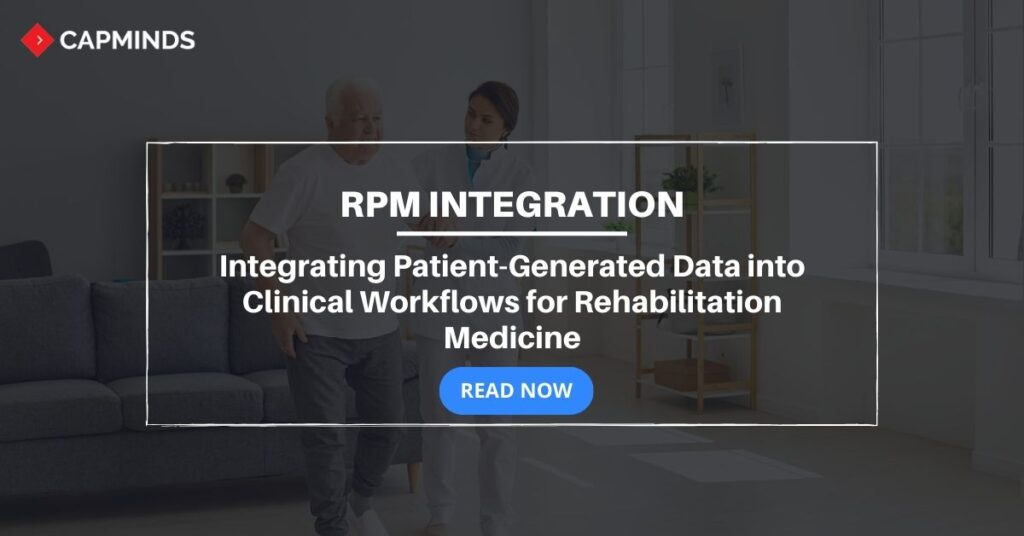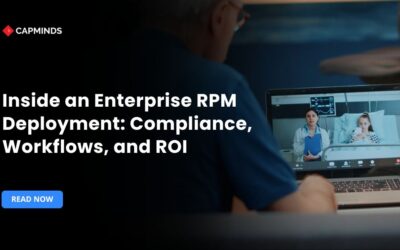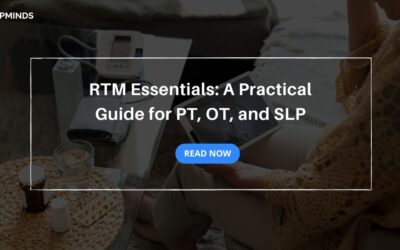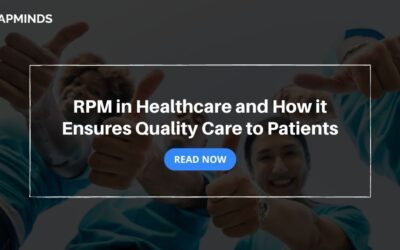Integrating Patient-Generated RPM Data into Clinical Workflows for Rehabilitation Medicine
Remote patient monitoring (RPM) is rapidly revolutionizing rehabilitation medicine. According to a 2022 BCC research forecast, the global RPM market is expected to reach $88.7 billion by 2026, indicating the immense promise of connected technologies for improved patient care.
For rehabilitation providers, the ability to continuously track patient progress outside the clinic holds particular significance.
Recent survey data shows post-acute care leaders rank expanding RPM capabilities as a #3 investment priority for the next 3 years. Yes, RPM adoption can require considerable upfront resource allocation for many rehab centers.
However, experts project net cost savings from reduced rehospitalizations and technology-supported personalized interventions. The key lies in effectively integrating real-time patient physiological and activity data into rehabilitation clinical workflows.
Driving Better Patient Engagement for Rehab Patient non-adherence remains a major barrier, severely impacting rehabilitation outcomes. But RPM platforms like Kaia Health’s digital therapy solution are seeing 90% patient engagement, enabled by connectivity.
Their approach combines AI-based motion tracking, chat-based coaching, and education to drive adherence. Such real examples depict how emerging RPM technologies are strongly positioned to address the underlying drivers of non-adherence – lack of motivation, forgetfulness, and exercise difficulties due to injury.
Early Signs of Success with Optimized RPM Rehab Protocols Orthopedic rehabilitation centers have shown promising results when leveraging wearable sensor data in adjusted care plans post-joint replacement surgery.
One study using the Apple Watch remotely monitored high-risk patients allowing early detection and prevention of dangerous opioid use. Meanwhile, cerebral stroke survivors have demonstrated better mobility metrics using the mRehab app’s customized tele-rehab exercises guided by clinicians’ real-time access to patient data.
RELATED: Remote Patient Monitoring 101: Everything for 2023 & Beyond
Here are 4 key strategies rehabilitation centers should consider when adopting remote monitoring technologies:
- Assess and Upgrade Connectivity Infrastructure Reliable internet connectivity forms RPM’s backbone. Perform infrastructure upgrades like boosting Wi-Fi, switching to fiber broadband, and expanding LAN ports to support smooth cross-site data transfers.
- Strategically Identify Rehab Patient Populations for RPM Good candidates include patients undergoing limb reconstruction surgery, those recovering from spinal cord injuries, and stroke rehabilitation patients with mobility goals. Define RPM rollout priority groups accordingly.
- Develop Protocols Aligning RPM Data to Interventions Create standardized protocols e.g. ordering radiological scans if patients’ joint mobility telemetry detections sudden restricted movement or mandating nutrition consults based on activity tracker trends.
- Continuously Engage Patients by Closing the Data Insights Loop Share RPM-generated analytics with patients during virtual consults. Adjust care plans if needed based on the latest indicators. This motivates patients to stay adherent when they realize rehab teams are continuously monitoring their recovery progress.
This is a sample technical blueprint for rehab centers to embed continuous streams of RPM data such as mobility metrics, vital signs monitoring, and patient-reported outcomes (PROs) into their clinical workflows through EHR integration.
Step 1: Define Critical RPM Data Types for Each Rehabilitation Protocol
Clarify specific data parameters required from remote devices/apps to support rehabilitation interventions for major programs like post-knee surgery recovery, and stroke rehabilitation. For example, range of motion indicators, pain levels, step counts, and sleep quality.
Step 2: Deploy Interoperable RPM Devices Aligning with Data Capture Needs
Choose medical-grade connected devices capturing defined physiological metrics like blood pressure, and heart rate combined with patient self-assessments on factors like strength, and flexibility critical for a holistic view. Ensure device data output conforms to integration-friendly health data standards like FHIR, and IEEE 11073.
Step 3: Ingest and Process RPM Data Using Modern Integration Tools
Leverage cloud-based middleware platforms (Azure IoT Hub, AWS IoT Core) with adapter libraries to ingest device data streams through standards-based APIs (REST, MQTT). Perform analytics: normalization, aggregations, longitudinal analysis, flagging outliers.
Step 4: Map Processed Metrics into Standard Terminologies
Normalize RPM data from proprietary device formats into standardized vocabularies (SNOMED, LOINC) recognized by destination clinical systems using ontology-driven mapping tools like LexiconCon, and Clinithink.
Step 5: Deliver Insights into EHR/Rehab IT Systems
Integrate processed RPM datasets into rehab EHR databases like Net Health, and WebPT via native APIs supporting discreet data mapping (FHIR) or batched bulk uploads through interface engines (Mirth Connect). Present contextually within patient summaries.
Let’s examine OpenEMR, an open-source rehab EHR platform. It supports FHIR-based RPM data integration into its database from API calls that can be triggered by a middleware layer listening to device message queues. Rehab practitioners access patient RPM trendlines reflecting mobility progress along with clinical assessment history for adjusted care plans
For years, rehabilitation medicine has grappled with data trapped in information difficulties of limiting the capacity for continuity of care. By converging patient self-reported health indicators, remote activity telemetry, and standardized assessment metrics on integrated RPM platforms, post-acute providers can finally deliver robust longitudinal care with round-the-clock patient engagement.
As remote monitoring continues influencing rehabilitation medicine, robust clinical software integration remains imperative but challenging. Following the structured process above with technologies like middleware, standardized terminologies, and modern APIs can help centers realize the full analytics potential of RPM for better rehabilitation outcomes.
The time is now for rehabilitation facilities to leverage disruptive RPM advancements to their fullest potential. Let us know how we can help in your digital transformation journey towards data-driven rehabilitation excellence!
RELATED: Real-time RPM Alerts and Notifications: Benefits of Implementing Rules Engines
Advance Your RPM Capabilities with CapMinds Integration Expertise
CapMinds brings over a decade of experience when it comes to ingesting and normalizing multi-source RPM data streams into major EHR platforms. Our experts and healthcare integration architects have enabled some of the most complex RPM implementations across leading rehab medicine institutions.
We take end-to-end ownership, working closely with your clinicians to define critical data parameters, deploying and validating medical-grade devices, building custom APIs and clinical decision support algorithms so insights are delivered at the point of care.
Let our proven RPM integration frameworks accelerate your digital transformation. Contact CAPMINDS to leverage our device connectivity know-how and healthcare data choreography mastery to propel your rehabilitation outcomes to new heights!




